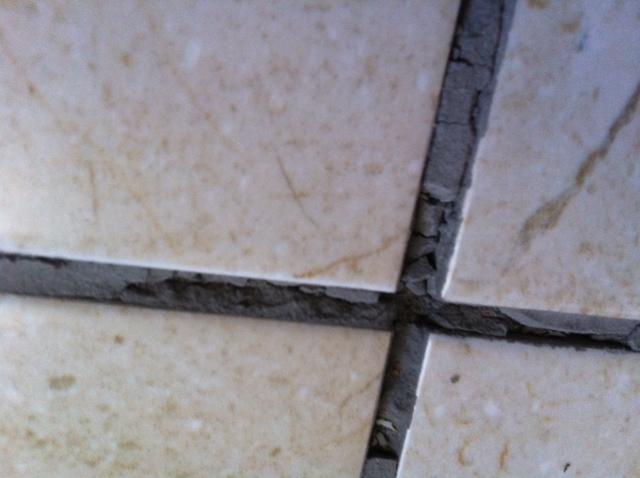I have recentlty had a tiling job done on a flat on second floor, its a victorian conversion flat, Linyl flooring was laid before. and it was moving slightly and the floor bumping up too, so I decided to tile it. Now what happened was that during the process, the old flooring got taken out i.e Linyl, a think layer of plywood and a foamy like material which I believe is for noise insulation.
On came 9mm ply screwed to the ground, and tiles laid on it, what seems to be happening is that as soon as grouting is laid, and starts to dry it begins to crack. Now I must admit, I dont believe the ply on the floor is 100% strong. As I can still feel a little tiny movement, but not significantly much.
A few things/thoughts.
Coould it be that the grouting used isnt the flexible and thus causing this problem.
Mesh wasnt lasd on the floor before the tiles went on it.
At the start of the job, the wrong type of glue was used, they used wall for parts of the kitchen before the floor glue was bought.
Any ideas here on what can be done.
I have included pictures of the old flooring and also the new tiled one as well, the picture looks like its laminate as in the old flooring but its linyl.
New floor
Old floor
![]()
![GALLERY]](http://[GALLERY=media, 43433][/GALLERY])
On came 9mm ply screwed to the ground, and tiles laid on it, what seems to be happening is that as soon as grouting is laid, and starts to dry it begins to crack. Now I must admit, I dont believe the ply on the floor is 100% strong. As I can still feel a little tiny movement, but not significantly much.
A few things/thoughts.
Coould it be that the grouting used isnt the flexible and thus causing this problem.
Mesh wasnt lasd on the floor before the tiles went on it.
At the start of the job, the wrong type of glue was used, they used wall for parts of the kitchen before the floor glue was bought.
Any ideas here on what can be done.
I have included pictures of the old flooring and also the new tiled one as well, the picture looks like its laminate as in the old flooring but its linyl.
New floor
Old floor


